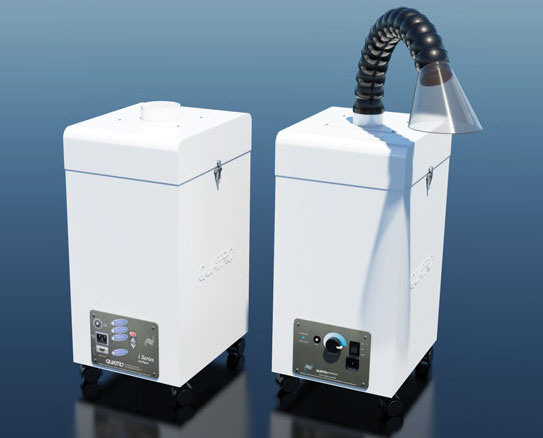- Sign In
- |
- Sign Up
- |
- My Quote (0)
- |
- CART (0)
How to Make Your 3D Printing Workshop Safer
Written by: Global Test Supply,

Figure 1: 3D Printing Workshop Environment
Studies have shown that 3D printing produces toxic fumes that can cause dizziness, respiratory problems, and other health risks. However, that doesn’t mean you should stop printing. With proper safety measures in place, you can neutralize the fumes and maintain healthy air quality around the machine. Whether you’re installing a 3D printer for the first time or are looking to update your existing setup, follow these tips from Global Test Supply on how to make your work station safer.
1. Switch Your Filament
Scientists have determined that polylactic acid (PLA) filament is safer than acrylonitrile butadiene styrene (ABS) filament.
1. Switch Your Filament
When heated, ABS filament releases billions of ultrafine particles into the air every minute. These particles can enter the operator’s airways, causing them to develop a cough, chest pain, difficulty breathing, and even infection. While PLA filament also releases ultrafine particles, ABS releases even more. In addition, ABS 3D printing emits toxic fumes containing styrene and other volatile organic compounds. Styrene can lead to a host of health issues and is even believed to cause an increased risk of cancer.
If possible, consider switching your filament from ABS to PLA or another type. However, depending on your production needs, this may not be an option. Regardless of which kind of filament you use, we recommend putting a filtration system in place.
2. Install a Fume Extractor
Fume extraction units use multistage filtration systems with medical-grade HEPA filters, plus powerful motors/turbines, to effectively remove hazardous substances from the air and safely contain them. They’re designed to work with particulate matter, gases, and odors that may be generated during the 3D printing process.
For your convenience, fume extractors come in a variety of sizes and styles suited for light-duty, medium-duty, and heavy-duty printing. Some models even boast whisper-quiet operation for minimal distraction and come in compact, space-saving designs to accommodate work areas of all sizes and configurations.
The reason fume extractors work so well is because they are specifically engineered for additive manufacturing processes. Aside from 3D printing, you might also see them used for PolyJet Technology, Selective Laser Sintering (SLS), Stereolithography, Wax Deposition Modeling (WDM), and more.

Figure 2: QUATRO SPL400 Laser Fume Extractor and SPL400 with capture arm
3. Filter and Ventilate
Without a fume extractor, you’ll need to find other ways to filter and ventilate. HEPA filters are recommended, as they are highly effective at managing 3D printing by-products. Charcoal filters and enclosure units are also an option. If the 3D printer fumes are bothering you and causing symptoms, such as respiratory irritation, open any windows and doors you can to help ventilate the room.
A fume extractor is your best bet against 3D printer fumes.
Not only does it take care of air filtration, but it does so in a way that’s simple and hassle-free. Instead of dealing with complicated systems or relying on poor ventilation methods, all you have to do is install a fume extractor. Best of all, fume extractors take care of particles and VOCs before they ever reach your breathing zone. To find one that’s right for your work station, shop the selection of fume extractors from Global Test Supply online now.
3D Printing Safety
In recent years, 3D printing has become a frequently used technology that simplifies the way your ideas turn into reality. Although this technology has its benefits, it uses a filament that, when heated, can release harmful substances into the air. These ultrafine particles (UFP) will affect the overall air quality of your workspace and can cause a range of health issues such as:
JUMP TO...
VIDEO...
The use of these instruments for this application is paramount, our team of experts are trained and ready to answer your questions.